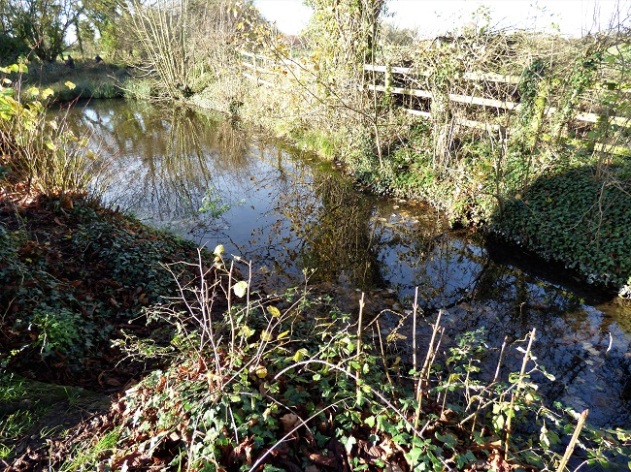
We could, when we eventually found it, be forgiven for having missed the tiny hamlet of Horsenden. Accessed via a sharp turn-off and a narrow lane that leads only into the village, you would miss it even if you blinked. The lane leads between fields and woodland, passing a mere handful of picturesque cottages, until you arrive at a place where the stream that runs beside the road widens into a small pond. You can park here, beneath the trees and opposite the gates to both the church and the manor stables.
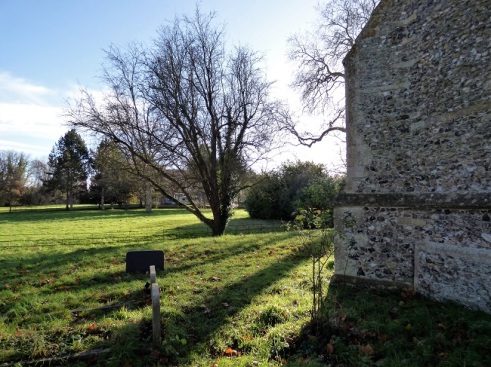
A glimpse of the manor house from the churchyard
Although we were here to track down the church, it turned out that there was an awful lot to learn about this rural hamlet before we even left the car. For a start, it stands close to the Icknield Way, one of the four medieval highways of Britain, but one with an ancient origin. Running from Norfolk to Wiltshire, through Salisbury Plain and close to Stonehenge, across the breadth of the country, it may have been established and named for the Iceni tribe, in the centuries before its most famous queen, Boudicca, defied the invading Romans. It may even be almost as old as the five-thousand year old Ridgeway, the oldest track in the land. Either way, it proves that the Romans did not create all the cross country roads… some, at least, they merely adopted and took the credit for their creation.
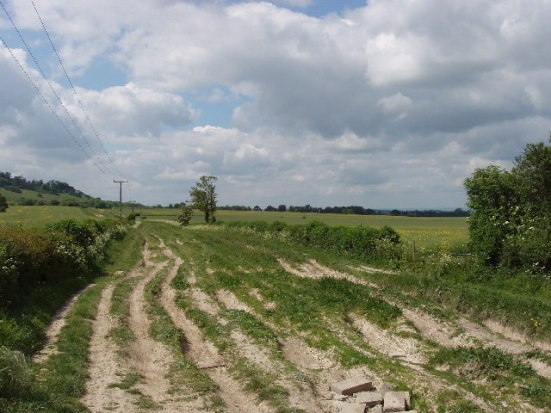
Icknield Way cc-by-sa/2.0 – © David Hawgood – geograph.org.uk/p/14375
Even the name of the village plunged us into the realms of legend, history and the fringes of Arthurian myth. Horsenden is thought to be named for Horsa, who, with his brother Hengist was one of the first of the Saxons to invade Britain in the fifth century with an army of Angles, Saxons and Jutes. Hengist eventually became the king of Kent, while Horsa was killed in battle against the Britons. Local legend has it that he is associated with one of the burial mounds on the hillside above the village, close to the chalk-cut, equal-armed Bledlow Cross, which may once have been less Christian and more phallic in shape and symbolism.
Hengist and Horsa, whose names mean ‘stallion’ and ‘horse’ respectively, may have been either named for, or personifications of the divine twins of Proto-Indo-European religion. Some stories even associate the White Horse of Uffington with them, although the great horse was cut into the chalk between 1380 and 550 BC, at least a thousand years before the brothers sailed to these shores.
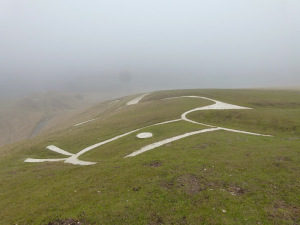
The head of the White Horse of Uffington.
The legends, of which many versions exist, but no historical record, say that they came at the invitation of King Vortigern, as mercenaries, to help in the fight against the Picts and Scots, in exchange for land on what later became known as the Saxon Shore. However, when Vortigern’s son was killed, the brothers dangled their sister, Rowena, in front of the king, using his lust to extort more land until they had all of the kingdom of Kent.
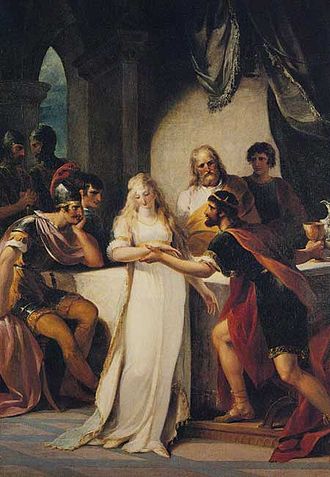
Vortigern and Rowena, by William Hamilton
Wanting still more, they instigated the incident known as the Treachery of the Long Knives, where, bidding Vortigern to a banquet on Salisbury Plain, to cement the peace between them, Hengist ordered his men to conceal knives in the soles of their boots and to draw them at his command. All the Britons were slaughtered except Vortigern who was made to ransom himself with the ‘gift’ of yet more lands. The core of this story occurs again and again through the various mythologies of the British Isles and beyond. Who knows from which incident fact morphed into legend and slid into myth…
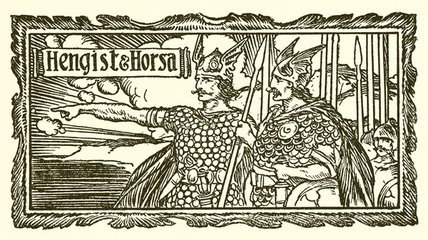
Edward Parrott’s Pageant of British History (1909)
In yet another legend, and possibly the best known, it was Vortigern who, seeking to build a tower at Dinas Emrys, as a refuge against both the Saxons and Ambrosius Aurelianus, whose royal parents he is said to have murdered, found that his tower fell down every night, regardless of how carefully it was built. His advisors told him the foundations needed to be slaked with the blood of a boy not born of mortal man… and the one youth they found whose conception and birth appeared to match that requirement was Merlin.
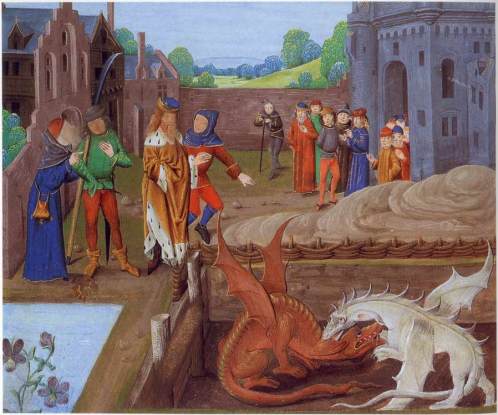
Illumination of a 15th-century manuscript of Historia Regum Britanniae held at Lambeth Palace, showing Vortigern and the dragons
The young Merlin laughed at the advice and showed him instead a hidden pool where two dragons fought. The white dragon symbolised the Saxons and the red dragon the British forces. The white dragon was winning the battle… but it was the red dragon that emerged victorious and the fortress, whose remains can still be seen, was given to the victor… Ambrosius, known in Welsh as Emrys Wledig.
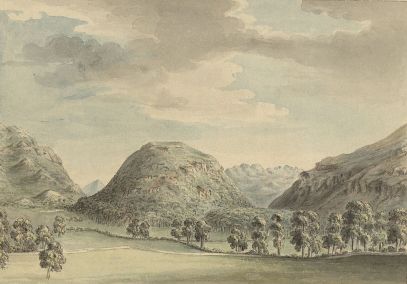
Dinas Emrys, from Pennant’s A tour in Wales, 1778
There are more modern ‘legends’ in Horsenden too. Jay Kay of Jamiroquai fame lives in the hamlet… presumably in the manor house, with its vast grounds… and, in the churchyard, sleep the remains of the remains of Edward Stone (1702–1768) the vicar of the parish, who discovered salicylic acid, the active ingredient of aspirin.
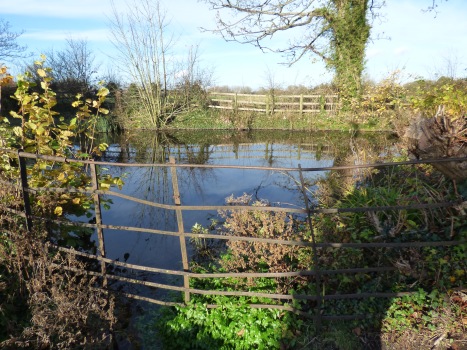
Walking one day whilst in the grip of ‘agues’, he felt the urge to chew on the bark of the willow tree. Being aware of the herbal ‘doctrine of signatures’ and of the bitter taste of the bark of the Peruvian cinchona tree − from which quinine, used to treat malaria, is derived, the bitter taste of the willow intrigued him. He dried and powdered willow bark and experimented with fifty people, finding the powder useful for all manner of ailments and presented his findings to the Royal Society. Although he served as incumbent in many local villages, it was to Horsenden church that he wanted his body returning for burial. So, perhaps it was time we left the car for a look at the church…
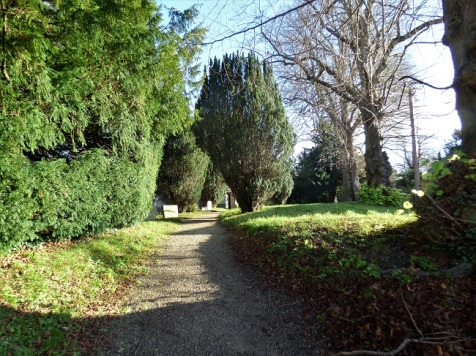

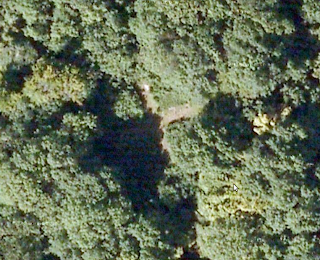








































Another intriguing place to visit!
LikeLike
Amazing what you find when you start digging 🙂
LikeLiked by 1 person
Sue, you make history alive and so interesting. Thank you for this posting.
LikeLike
Glad you enjoyed it, Lynn. I love digging into the tories behind the places we go 🙂
LikeLike
This is fascinating, Sue. Thank you for the tales and pictures, too.
LikeLike
There was so much surfacing from this one flying visit…
LikeLike
The UK has so much history, Sue. Every time I read one of your posts I learn new information.
LikeLike
Thereis so much to learn, even in the smallest of hamlets.
LikeLiked by 1 person
Some great bits of history and myth here. I love all of it. Thanks for sharing.
LikeLike
We had no idea what we were stumbling into with this little place 🙂
LikeLike
What fascinating history. It could be straight out of the movies that I watch on television. Who needs fantasy when these legends abound. Great post, Sue.
LikeLike
These ancient myths and legends are where the movies get their ideas more than hal the time 🙂
LikeLiked by 1 person
It sure sounds like it!
LikeLike
🙂
LikeLiked by 1 person
Amazing what stories are to be found in the tiniest of places.
LikeLike
I could have carried on digging for ages…
LikeLike